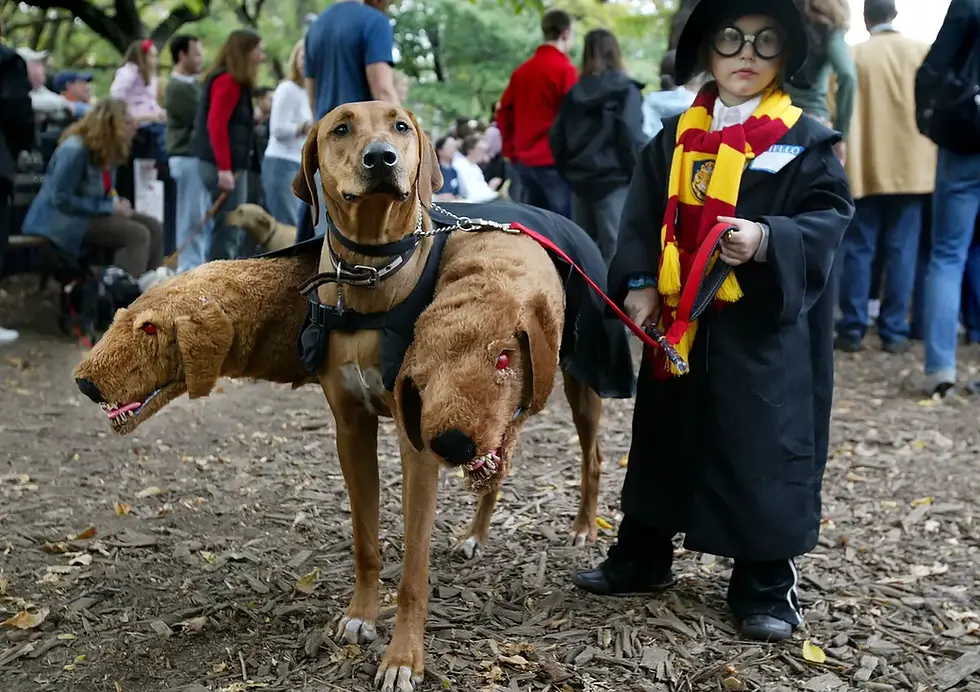When Dogs Become “Ball Junkies”: Exploring Toy Obsession & Addiction in Pets
- Ricki Lane
- Oct 13
- 3 min read
You may have teased your pup as a “ball junkie” — that one dog who can’t get enough of their favorite toy. But what if that’s more than playful hyperbole? Recent research suggests that dogs can show addiction‑style behaviors toward beloved toys, especially balls and chewables.

🐶 Study Shows Dogs Can Exhibit Addiction-Like Toy Behavior
A team of behavioral biologists recently conducted a pioneering study documenting obsessive toy behaviors in dogs. Their key finding: approximately one in three dogs in the study group displayed signs similar to addiction — agitation when denied access, refusal of other rewards, and persistent fixation. Gizmodo
These behaviors go beyond mere enthusiasm and hint at deeper motivation issues around a dog’s attachment to certain items.
What the Experiment Involved
Participants: 105 toy-motivated dogs (common breeds: Belgian Malinois, Border Collies, Labradors) Gizmodo
Toys: Each dog was given access to their most prized toy(s), including favorites from home when available. Gizmodo
Behavioral Observations: Researchers applied criteria typically used for human addiction to assess whether dogs’ toy-motivated behaviors aligned:
Excess focus: Dogs remained intensely fixated on a toy even when unreachable
Neglect of other activities: Dogs sometimes ignored free treats or other playing options
Emotional distress: Some dogs remained agitated for up to 15 minutes after toy removal, with elevated heart rates — an indicator of maladaptive arousal Gizmodo
From their results, 33 out of 105 dogs showed behaviors consistent with what the researchers called “addictive-like” tendencies toward toys. Gizmodo
Signs Your Dog May Be Showing Toy Fixation
Here are red flags that a dog’s obsession might lean into unhealthy:
Irritability when toy access is removed
Refusal to switch to other rewards or activities
Persistently elevated arousal or stress after toy is taken away
Ignoring treats or alternative play
Intense focus even when the toy is out of reach
These behaviors reflect the excessive and maladaptive criteria used for diagnosing addiction in humans — applied here to canine behavior. Gizmodo
What the Researchers Say — And What We Still Don’t Know
Research lead Stefanie Riemer cautions that high motivation or strong toy preference does not always equate to addiction. Gizmodo
A few points to keep in mind:
Measuring addiction in nonverbal animals is inherently challenging.
The study focused only on dogs already described by owners as “toy-motivated,” so it's unclear how widespread these behaviors are across all dogs.
Preliminary signs suggest these tendencies may emerge early, possibly in puppyhood.
Researchers plan follow-up studies to examine breed predispositions and even investigate ADHD-like traits in dogs, given the parallels observed. Gizmodo
Practical Advice for Dog Owners
If your dog shows an extreme fixation on a toy, here are some steps to maintain healthy behavior:
Rotate Toys — Don’t give constant access; alternate between two or more
Structured Play Time — Limit sessions and gradually phase out overreliance
Reward Alternatives — Use treats, walks, or varied games to shift focus
Calm Transition — Introduce toy removal gently and avoid abrupt takeaways
Seek Professional Help — Consult a dog behaviorist if obsessive behaviors persist
Final Thoughts
While many dogs labeled “ball junkies” are simply passionate about play, a subset might be flirting with fixation that crosses a line into unhealthy dependency. The new research opens intriguing paths into how we understand canine cognition, motivation, and even parallels with human behavioral disorders.
If your pup’s ball obsession seems extreme, it may be time to intervene with balanced routines and professional guidance.



Comments